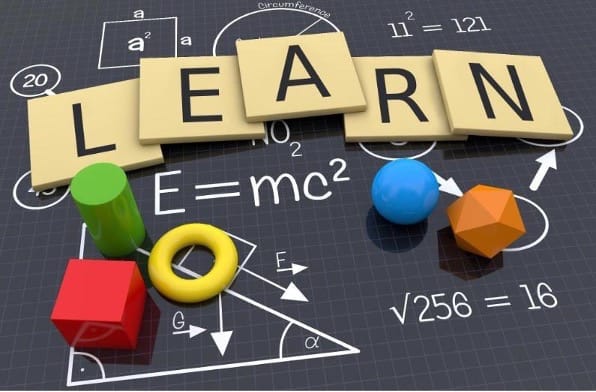
by Derrick Nicholas & Dr. Isaac Newton
Math continues to be the Achilles heel for most students in the Caribbean in general, and the OECS in particular. Persistent poor results on CXC math exams highlights an urgent need for reform in how the subject is taught. The official data documents the average CXC pass rate in 2024 is 36 percent, and around 39 percent over the last five years.
As global companies shift to hiring based on skills rather than degrees, Ministries of Education must rethink their strategies. The challenge is threefold: (i) making math engaging and practical, (ii) attracting skilled teachers to inspire students, and (iii) strengthening the link between reading comprehension in order to understanding math problems. Mastering critical thinking, rather than rote memorization, is essential for real progress.
The Problem: Abstract teaching and lack of engagement.
Math is often taught in a disconnected, abstract way that fails to engage students. This traditional approach fosters fear and makes it hard for students to see how math applies to real life. While some experts argue (and rightly so) the issue stems from reading difficulties, the real challenge is how math is taught — too focused on formulas with little real-world connection.
For example, rather than relying on equations, teachers could have students fix a bike. In this process, they would learn math through measurements and geometry, use English to follow instructions, and explore physics through mechanics. This hands-on approach makes math practical and reduces anxiety.
The Critical Role of Reading in Understanding Math
Reading comprehension plays a fundamental role in understanding mathematical concepts, particularly when solving word problems. Many students struggle with math not because they lack numerical ability, but because they cannot interpret what the problem is asking. Not enough attention is paid to the link between reading and math, especially crucial when solving multi-step problems that require a deep understanding of both the language and the logic behind them.
Word problems, for instance, often use complex language that can confuse students who are not strong readers. If a student cannot break down and comprehend the wording of the problem, they will struggle to apply the appropriate mathematical concepts, regardless of their ability to handle numbers.
To bridge this gap, math instruction should emphasize the development of strong reading comprehension skills alongside numeracy. This means incorporating literacy strategies into math lessons, such as teaching students how to identify key information in word problems, breaking down sentences, and understanding the vocabulary specific to mathematics. Critical thinking, therefore, emerges not only from numerical calculations but from fully grasping the context provided by the words that frame those calculations.
Solutions: Transforming Math Education
- Competency-Based Learning: Move away from memorizing formulas and focus on practical skills. Encourage students to use math in real-world tasks like budgeting, planning a trip, or analyzing sports statistics. This turns math into a valuable, everyday tool.
- Attracting Top Math Teachers: To improve outcomes, hire skilled teachers. Offering competitive salaries, professional development, and long-term incentives can make the profession more attractive. Teachers should focus on creativity and problem-solving to help students apply concepts in real life.
- Integrating Reading and Math: Teachers should focus on enhancing students’ reading comprehension skills to help them better understand math problems. This can be done by breaking down word problems, using storytelling in math instruction, and integrating literacy-building activities that develop both language and numeracy skills simultaneously. Teaching students to approach math problems with strong reading strategies will enhance their ability to solve complex equations and improve their overall performance.
Recommendations for Improving Math Education
Project-Based Learning: Use practical projects where students solve real-world problems, such as designing energy-efficient homes or developing business models. This makes math tangible and essential for real-life challenges.
Gamification: Introduce interactive games and simulations to make learning fun. Math apps that challenge students to solve puzzles or manage resources can make the subject engaging and competitive.
Collaborative Learning: Group projects encourage peer teaching, where students explain concepts to one another. This strengthens their understanding and builds confidence. Ban the use of calculators in primary schools.
Finally, hold teachers accountable for their students’ success.
How Parents Can Help
Parents are key to nurturing a love for math. They can: (i) Incorporate Math in Daily Life: Engage children with math through activities like cooking, budgeting, or building small projects. This helps children see how math applies beyond the classroom, (ii) Encourage a Growth Mindset: Promote the idea that mistakes are learning opportunities. This fosters confidence and curiosity, replacing fear with excitement.
Conclusion
To boost math performance across the OECS, Ministries of Education must adopt competency-based learning, attract top teachers, and focus on the critical link between reading comprehension and understanding math. Parents, too, play a vital role by reinforcing math’s relevance in everyday life. With these efforts, students can shift from fearing math to mastering it as an essential life skill.
ABOUT the writers:
Derrick Nicholas is a Private Math Tutor and Sports Administrator.
Dr. Isaac Newton is a former Primary School Teacher, Math Tutor, and Harvard & Columbia Graduate.
Advertise with the mоѕt vіѕіtеd nеwѕ ѕіtе іn Antigua!
We offer fully customizable and flexible digital marketing packages.
Contact us at [email protected]
















